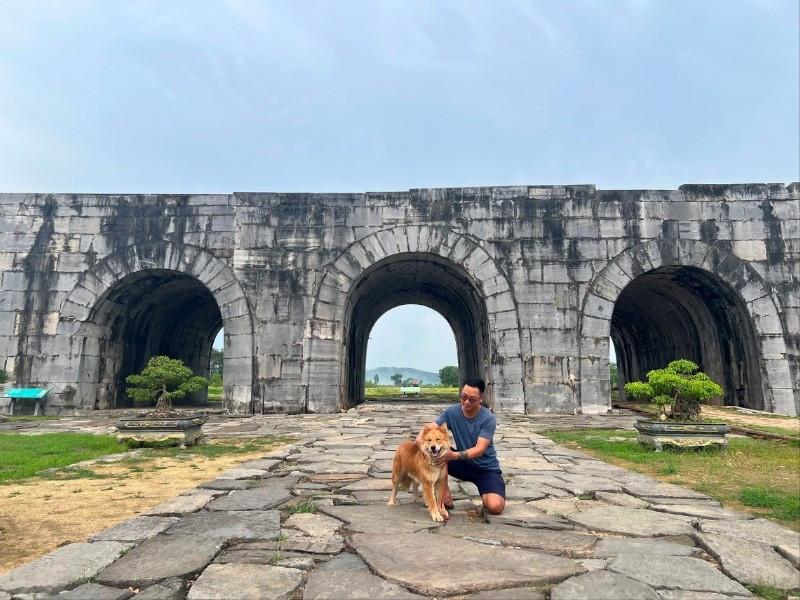
Tran Anh Tuan and the dog Lai that he takes care of.
In Cam Bao village, Vinh Long commune, Vinh Loc district, Thanh Hoa province, in a spacious, airy house located next to National Highway 217, I was startled awake by the sound of dogs barking so loudly that it seemed to wake up the whole area.
Through the iron mesh door separating the barn and the kitchen, I saw Tran Anh Tuan carrying each bowl of food and placing it in each cage. The dogs no longer barked, only squealed happily and anxiously. Tuan, also known as Tuan Lai, born in 1985, is the person who has spent 13 years preserving the precious Lai dog breed of Vietnam, which is in danger of extinction.
Mountain Dog
Cam Bao is a small village in the north of the Ho Dynasty Citadel, established after the Le Dynasty defeated the Mac Dynasty in the 16th century. Besides the great cultural values and revolutionary traditions, full of pride in the development history of Cam Bao, another thing that interests me is that there is a young man here with a love for Lai dogs who spared no effort and money to search for, care for and preserve the dog breed that is one of the "four great national dogs" of Vietnam, besides Phu Quoc dogs, Bac Ha dogs, and H'Mong bobtail dogs.
According to Tuan, the history of the Lai dog is still unclear. They may have originated from an ancient dog species whose fossil remains were found along the Yangtze River in China, dating back 7,000 years. About 4,000-6,000 years ago, the ancestors of the Lai dog migrated to Vietnam. People also found their images on Dong Son bronze drums, daggers, axes, combs, drinking cups, hand guards and in the tombs of Dai Viet warriors.
According to folklore, the Lai dog is a descendant of a cross between a domestic dog and a golden jackal or an extinct red wolf. In the book Dai Viet Thong Su, scholar Le Quy Don wrote that the Lai dog was selected and raised by Le Loi in the 14th century to serve in the army and as hunting dogs. They contributed to the Lam Son uprising with their ability to: hunt prey, track enemy troops, distract pursuers and save the lives of the insurgents in times of danger.
After Le Loi defeated the Ming army, Lai dogs followed the soldiers to remote border areas, mainly in the Northwest such as Son La, Lai Chau, Dien Bien , Lao Cai... or even the Central Highlands as writer Thien Luong wrote in his memoir "Wild Animals of the Central Highlands": "The Lai dog breed is the best for hunting, because it has tall legs, big ears, and is strong. This type of dog can hear its owner's howl and come back when it goes far away... The ethnic people in the Central Highlands, every house raises Lai dogs for hunting, so they have meat to eat all year round...".
Nowadays, Lai dogs are in danger of disappearing. The biggest threat is crossbreeding with foreign dog breeds because Lai dogs often roam freely in search of food. Therefore, for the past 13 years, although not growing up in the highlands, Tuan has devoted his heart to the conservation of Lai dogs as if by chance. He strives to collect and breed purebred dogs, despite the difficulty of having very few Lai dogs left.
Alone on a long journey
Born into a poor farming family, since childhood, Tuan was very interested in farming and raising and caring for livestock. Therefore, after studying at university in Hanoi , he actively participated in dog and cat rescue work with a group of friends. Practical experience helped him gain more knowledge about veterinary medicine. That is why after returning to Cam Bao, he immediately started to search for and preserve Lai dogs.
The love for Lai dogs began when Tuan spent time searching for information and oral stories about the native dog breed that was a canine soldier that helped King Le fight off the Ming invaders. He was willing to wait three years to own his first dog. Talking about this special memory, Tuan said that he knew Ven (the name of Lai dog) since it was just a few months old. During the three years until the previous owner, a hunter, passed it on, he followed him to learn from his experience, and learned about the characteristics and habits of Lai dogs.
Observing the pack of more than 10 dogs in Tuan's kennel, the youngest of which is only a few months old and the oldest is over three years old, I understood why he thought this was a very loyal and intelligent dog breed. It is not clear whether Lai's dog is a wolf hybrid or not, but looking at its appearance, I saw very similar features in appearance, especially the face, the way it walks and runs.
Each has a sharp face, slanted amber or light brown eyes and is brave. However, the Lai dog is easy to approach, gentle, and has stable nerves. They do not bark at strangers, they are obedient, follow orders and are not at all wild like their appearance.
To distinguish a purebred Lai dog from a crossbred one, only experienced people like Tuan can see clearly. The outstanding features of a Lai dog are the head and face, the skull is flat as if it was pressed horizontally, the bone frame is narrow but strong, the hair like a horse mane runs along the spine, the tail is bushy like a reed, curved like a squirrel's tail, height 50-60cm, weight 13-18kg...
Need community support
For Tuan, preserving the Lai dog is not simply keeping a precious breed of pet, but preserving a part of history, a part of traditional culture. The Lai dog used to be a “soldier dog”, following people into the forest, hunting, guarding the house, like a family member. However, for a long time, the Lai dog was only considered a domestic dog, being brought to the market to sell or killed for meat. With the current trend of raising foreign dogs and changing living conditions, this breed is gradually disappearing.
Before Tuan, there were many dedicated people who tried to care for and preserve Lai dogs but all failed. They were lessons and motivation for him to avoid repeating the same mistakes. He tried to learn information from historical documents, observe ancient stone dogs and go to remote villages to see how people raise and care for dogs, to have an overview of the skull, skeleton, fur system and distribution area...
He recorded everything carefully to gradually visualize what a purebred Lai dog is like. After that, he created a Facebook page to introduce and share his experience in taking care of this breed of dog, thereby gradually creating a community of interest and love.
He believes that, like other regional cultural and tourism products, Lai dogs have stories associated with history that make them a typical and prominent animal of Thanh Hoa or more broadly of Vietnam. Therefore, his dream is to build a small center to attract people to visit, listen to stories, learn how to identify Lai dogs, share experiences and spread love for the dog breed that fought alongside King Le in the history of fighting foreign invaders.
And this will not only be a place for Lai dogs to have a chance to survive, but also a space connecting people who love nature, indigenous culture, and old values.
In the afternoon, amidst the dogs' howling and barking calls to the pack, amidst the hot and sultry early summer sun, the image of the young man diligently working with the rice bowls, with his wild yet gentle slanted eyes, made me understand that the journey Tuan is on is not simply to preserve a native dog breed, but to preserve a part of his memory, to preserve his identity in an era where everything is constantly changing.
Source: https://nhandan.vn/nguoi-bao-ton-cho-lai-song-ma-post886969.html
















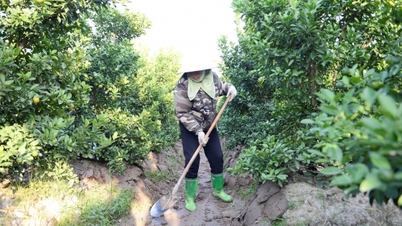



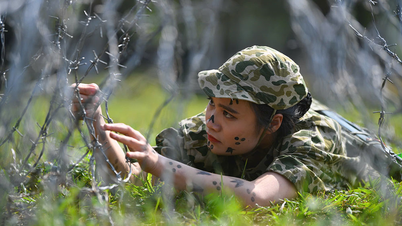


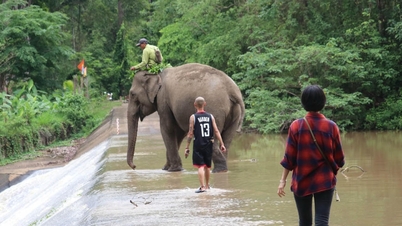












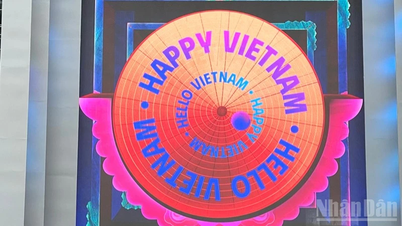
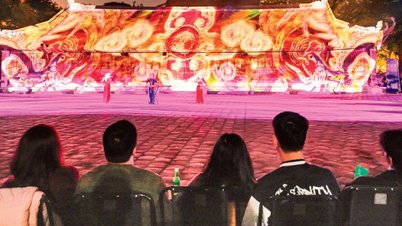



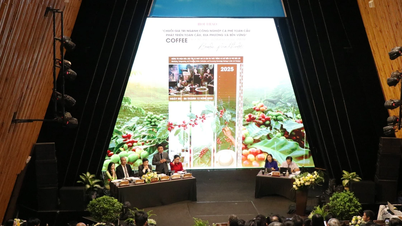

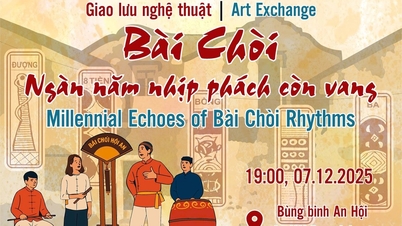

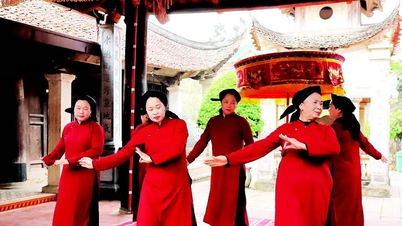
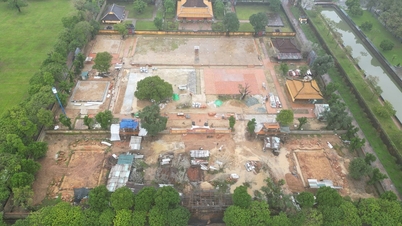


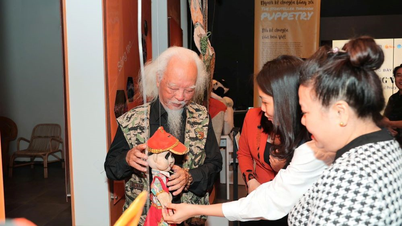

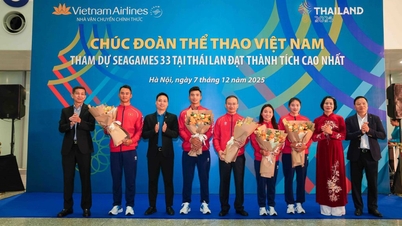


















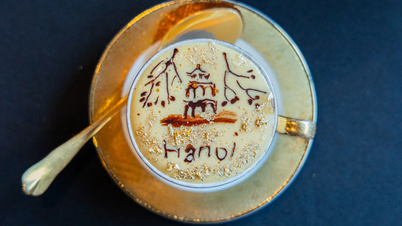












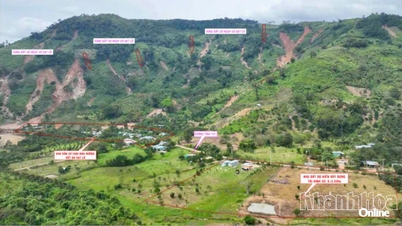




















Comment (0)